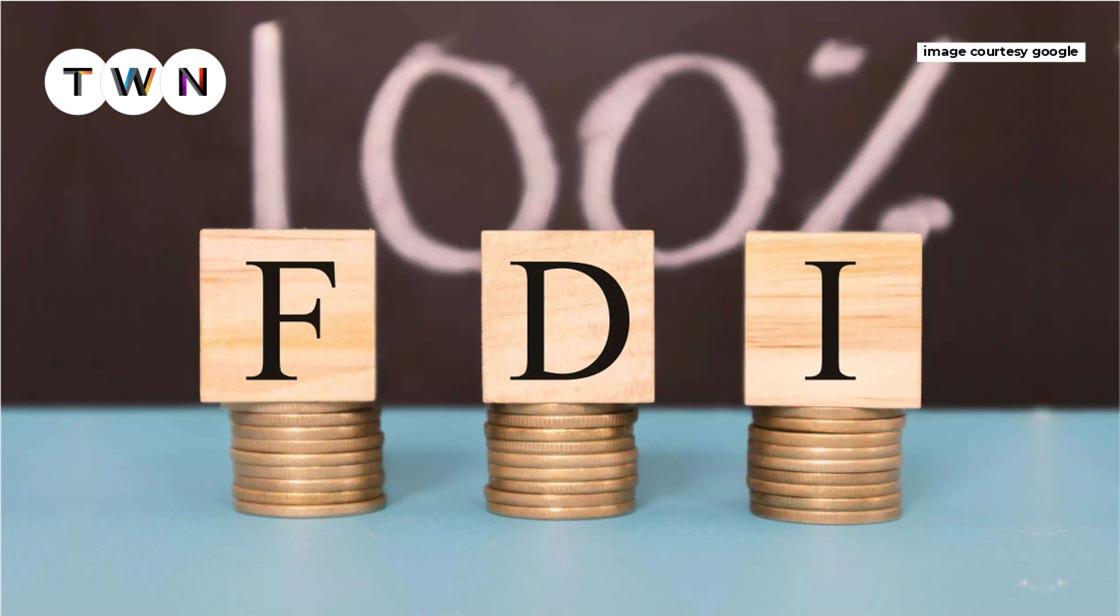
Will India be able to maintain this when the global financial crisis develops as a result of the conflict in Ukraine? Will it be able to secure $100 billion in foreign direct investment in a single year? When, if at all? We'll learn more about this issue in the blog you're reading right now. Inflows of foreign direct investment into India have fluctuated dramatically. Whether it's because of Covid or the Ukraine war, global investors see India as a hotspot for investment, and thus FDI.
Inflow of Foreign Direct Investment (FDI) into India
India (the world's fastest-growing major economy) has received $165 billion in foreign direct investment in the last two years (FDI). During these pandemic years, the world was reeling from Covid-19. Despite the fact that the second wave hit India hard, corporations from a record 101 nations invested in 57 sectors in 2021-22. They were willing to put aside their misgivings about Covid in order to engage in the India story. In fact, total inflows to India during the epidemic years—$81.9 billion in 2020-21 and $83.5 billion in 2021-22—were higher than those received throughout Manmohan Singh's first six years in power.
Equity investments, earnings reinvested, and other capital are all part of India's FDI inflows. According to the Reserve Bank of India's newest set of data for 2021-22, Karnataka was the biggest receiving state, accounting for 38 percent of FDI equity inflows, followed by Maharashtra (26%), and Delhi (2%). (14 percent). Foreign investment in Karnataka has mostly focused on computer hardware and software, autos, and education.
The Indian government has yet to declare any goals. FDI, according to Deepak Bagla, CEO and MD of Invest India, is about more than simply money; it's also about global recognition and confidence. "If we have a supportive global environment, we can have $100 billion in FDI inflows annually in 24 to 36 months," he argues. Aside from Russia's invasion of Ukraine, there are a number of other issues that need to be addressed, High inflation and interest rates, fears of a worldwide recession in certain regions of the world, supply chain backlogs, and a scarcity of inputs such as semiconductors are all factors that contribute to an increasingly volatile financial climate. "India's tremendous expansion, on the other hand, will entice investors." Bagla claims that it is the world's fastest-growing big economy.
Invest India is an investment promotion and facilitation agency that is part of the Department for Promotion of Industry and Internal Trade. The number could approach $100 billion, according to Bibek Debroy, chairman of the Prime Minister's Economic Advisory Council. Debroy estimates that annual FDI inflows of up to $120 billion may be achieved in three years.
Karnataka's additional chief secretary, EVR Ramana Reddy, is in charge of vital departments such as commerce, industries, and information technology, If India's creative sector remains intact, he believes the country would hit the $100 billion FDI mark "very soon." "Karnataka produced 40 of the 100 unicorns born in India the previous year." He adds, "Startups were also essential in our FDI inflows." India's FDI data has been a roller-coaster ride since 2000-01, with huge gains like a 155 percent year-on-year increase in 2006-07 and occasional blips like a 26 percent decline in 2012-13. Analysts find it challenging to estimate future FDI patterns because of such data volatility. Gross FDI climbed year on year for 17 years and then declined five times in the last 22 years (2002-03, 2003-04, 2009-10, 2010-11, 2012-13).
According to a recent RBI bulletin, net FDI fell to $39.3 billion in 2021-22 from $44 billion the year before "owing to increased outward FDI by India and restitution by foreign investors." In the next years, net FDI is projected to be under pressure as more Indian corporations buy assets in foreign countries. However, the fact that India has received more foreign funds throughout the pandemic is unaffected by net numbers. This is primarily owing to the fact that under the automatic method, most sectors are accessible to 100 percent FDI.
Given the foregoing reasons, it is probable that FDI inflows into India would exceed $100 billion each year, despite the ongoing pandemic and severe economic catastrophes.
The FDI policy in India is necessary to understand in order to understand why FDI inflow is important for the country's economic progress.
In a Nutshell: FDI Policy
The Department of Industrial Policy and Promotion is the nodal department for the government's foreign direct investment policy formulation (FDI). It is also responsible for storing and managing data on inward FDI into India based on money transfers reported by the Reserve Bank of India (RBI).
The FDI policy is evaluated on a regular basis to ensure that it remains investor-friendly. To entice higher levels of FDI, the government has developed a liberal FDI policy, allowing up to 100% FDI via the automatic route in most sectors/activities. The FDI policy system has lately undergone significant adjustments to ensure that India remains an increasingly appealing investment destination. The Department is actively involved in the liberalisation and rationalisation of foreign direct investment policies. To that purpose, it has held several stakeholder consultations on various aspects of the FDI policy.
Tags:
fdi in india, fdi policy, the fastest growing large economy in the world



Comments
Post a Comment